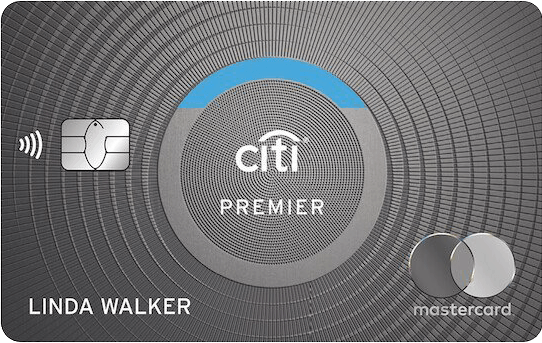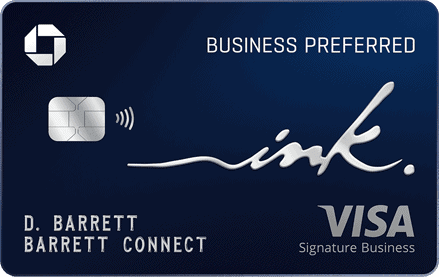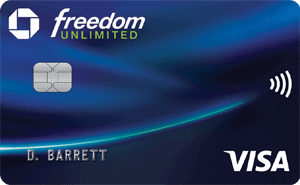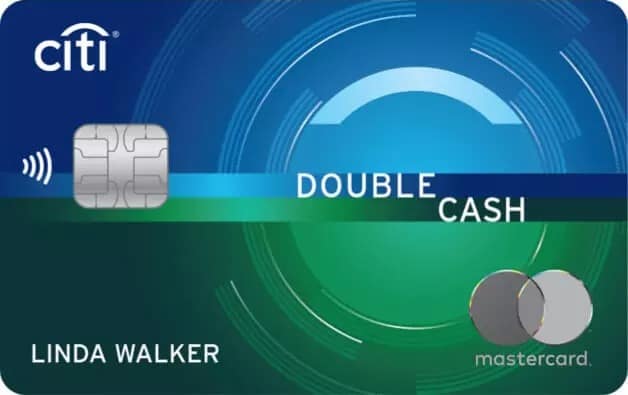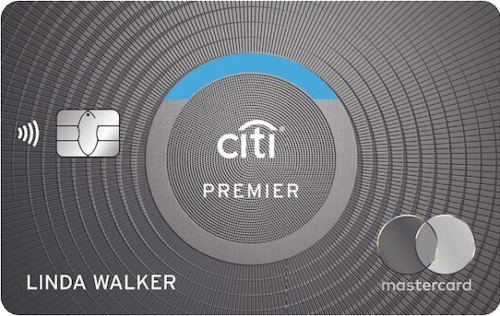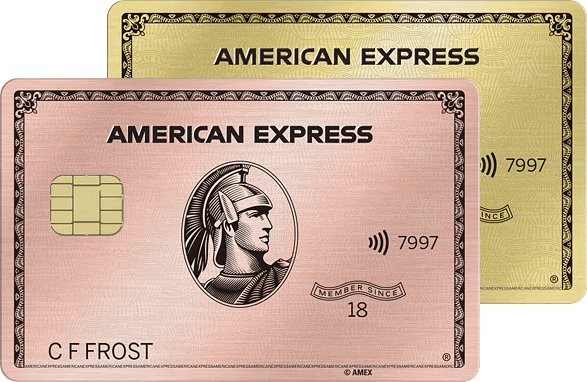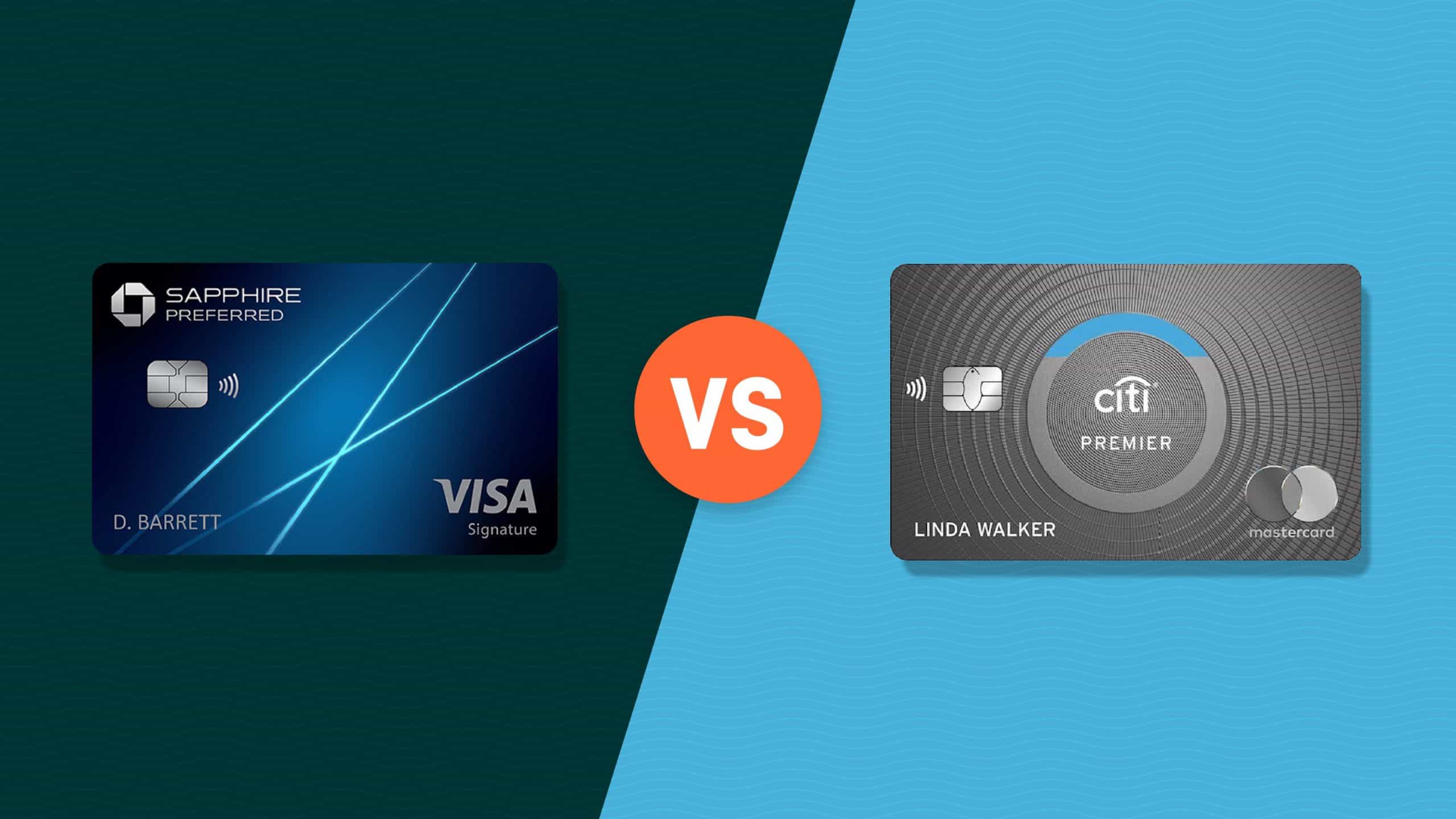
10xTravel is part of an affiliate sales network and receives compensation for sending traffic to partner sites, such as CreditCards.com. This compensation may impact how and where links appear on this site. This site does not include all financial companies or all available financial offers. Terms apply to American Express benefits and offers. Enrollment may be required for select American Express benefits and offers. Visit americanexpress.com to learn more.
Note: Some of the offers mentioned below may have changed or may no longer be available. The content on this page is accurate as of the posting date; however, some of our partner offers may have expired. You can view current offers here.
Editors Note: All information about the American Express® Green Card has been collected independently by 10xTravel. The American Express Green Card is no longer available through 10xTravel.
The competition for go-to credit cards is fierce. Just like college football fans, consumers tend to be loyal. While the Big Ten conference offers athletic departments large television contracts and nationwide prestige to lure teams like USC and UCLA from their conference, card companies dangle a slew of benefits and competitive welcome bonuses to tantalize you into switching cards.
While the Chase Sapphire Preferred® Card has been the fan-favorite recommendation for years, the Citi Premier® Card is an often overlooked competitor. Let’s take a look at both the Citi Premier® Card and the Chase Sapphire Preferred® Card and see Hoosiers best credit card option.
Citi Premier Card and Chase Sapphire Preferred Card Similarities
At first glance, the Citi Premier® Card and the Chase Sapphire Preferred® Card are as hard to tell apart as a wildcat and a Nittany lion. Chase and Citi each offer a slew of transfer partners, five of which overlap between the two programs. Each card has powerful earning potential on common spending categories and has a modest $95 annual fee.
A cursory peek would cause you to glance over the small differences in earning capacity and transfer partners and assume they were roughly the same. However, this is as mistaken as calling a wolverine a badger.
Let’s dig into the details of both the Citi Premier® Card and the Chase Sapphire Preferred® Card and discover what makes them so different.
Chase Sapphire Preferred® Card
60,000
bonus points
after you spend $4,000 on purchases in the first 3 months of account opening.
Annual Fee: $95
60,000
Citi ThankYou Points
after making $4,000 in purchases with your card within the first 3 months of account opening. Plus, for a limited time, earn a total of 10 ThankYou® Points per $1 spent on hotel, car rentals, and attractions (excluding air travel) booked on the Citi Travel℠ portal through June 30, 2024.
Annual Fee: $95
Chase Sapphire Preferred® Card Overview
The Chase Sapphire Preferred® Card is the recommended starter card for points and miles newbies. Because of its solid points earning capacity, travel benefits and quality of transfer partners for a modest fee, it’s an easy place to start for anyone wanting to experiment with traveling for less.
Although its benefits are slightly less liberal than its older brother, the Chase Sapphire Reserve®, its offerings are hardly spartan.
The Chase Sapphire Preferred® Card earns 1X Ultimate Rewards per dollar spent in non-bonus categories and offers bonus earning on the following categories:
- 5X on travel booked through the Ultimate Rewards travel portal
- 5X on Lyft rides (through March 2025)
- 3X at restaurants or select food delivery services
- 3X on online grocery purchases (except for Amazon or food clubs)
- 3X on select streaming services
- 2X on travel
You can redeem Ultimate Rewards points for travel through the Ultimate Rewards travel portal at a rate of 1.25 cents apiece. This is higher than the standard value of 1 cent per point of the cashback Chase cards, but lower than the 1.5 cents per point you’d receive through the Chase Sapphire Reserve®.
You can also transfer Ultimate Rewards to 14 partners at a 1:1 ratio. You must have a Chase Sapphire product or a Chase Ink Business® Preferred to transfer Ultimate Rewards to partners or to share points within a household.
Combining points from other Ultimate Rewards earning cards, like the Chase Freedom Flex℠, effectively increases the value of your other Ultimate Rewards by 25% if used in the travel portal.
The Chase Sapphire Preferred® Card also offers extra perks, such as travel delay or interruption insurance, auto collision rental damage waiver and various statement credits.
Chase Ink Business Preferred® Credit Card
100,000
Chase Ultimate Rewards Points®
after you spend $8,000 on purchases in the first 3 months after account opening
Annual Fee: $95
Chase Sapphire Preferred® Card
60,000
bonus points
after you spend $4,000 on purchases in the first 3 months of account opening.
Annual Fee: $95
Citi Premier® Card Overview
The Citi Premier® Card is Citi’s top-tier travel credit card since the Citi Prestige Card retreated into its hole like a gopher. With serious earning potential on common spending categories and a plethora of transfer options, the Citi Premier® Card looks as solid as a bruin, but is it as fierce as it seems?
The Citi Premier® Card earns 1X point on all non-bonus spending and these bonus rates on select categories:
- 3X at restaurants
- 3X at supermarkets
- 3X at gas stations
- 3X on air travel
- 3X on hotel stays
Unlike the Chase Sapphire Preferred, Citi ThankYou Points are worth just 1 cent each.
If you intend to transfer ThankYou Points to one of their 17 transfer partners, then this won’t bother you. If you’re often redeeming points through travel portals, this may throw up penalty flags. However, the Citi Premier offers a $100 hotel credit through the ThankYou Travel Center that virtually pays for the $95 annual fee.
Besides redeeming points through the portal or transferring to partners, you can redeem ThankYou Points for cash at a rate of 1 cent per point. Citi allows you to use this feature to buy gift cards, give to charity or erase purchases, but in the end, the rewards are worth the same.
For many travelers, the Citi Premier® Card flattens most credit cards when they go head-to-head on points earning. Even though the Citi Premier® is penalized with a false start on the travel portal rate, the coach says, “You have to play through the whistle.”
Let’s dig into the X’s and O’s of each card and find out which is our scarlet knight in shining armor and which is a trojan horse trying to sneak into your wallet.
Transfer Partners
Chase Sapphire Preferred® Card Transfer Partners
You can transfer Ultimate Rewards to any of 14 travel partners. These partners include 11 airlines and three hotel programs.
| Aer Lingus AerClub | JetBlue TrueBlue |
| Air Canada Aeroplan | Marriott Bonvoy |
| Air France-KLM Flying Blue | Singapore Airlines KrisFlyer |
| British Airways Executive Club | Southwest Rapid Rewards |
| Emirates Skywards | United MileagePlus |
| Iberia Plus | Virgin Atlantic Flying Club |
| IHG One Rewards Club | World of Hyatt |
Only five of these partners—AirFrance-KLM, Emirates, JetBlue Airways, Singapore Airlines and Virgin Atlantic—overlap with Citi’s transfer partners. An additional partner could be considered overlapping since you can combine Qatar Avios (earned with the Citi Premier® Card) with British Airways Executive Club or Iberia Plus (earned with the Chase Sapphire Preferred® Card).
In addition to transferring your points to these partner programs, you can redeem your points on the Ultimate Rewards travel portal powered by cxLoyalty. Each point is worth 1.25 cents as long as you select to redeem through your Chase Sapphire Preferred® Card account.
A best practice is to consolidate your Ultimate Rewards periodically onto your Chase card with the highest redemption value, either the Chase Sapphire Preferred® Card or the Chase Sapphire Reserve® if you have it. You may also consolidate your points within households, but the other household account must hold a Chase Business Ink Preferred or a Chase Sapphire product.
You can also redeem your points for a statement credit at a rate of 1 cent per point. However, with so many better redemption opportunities, we don’t recommend this. Why redeem points for 1 cent each when you can redeem it for travel at a minimum of 1.25 cents each?
Chase Sapphire Preferred® Card
60,000
bonus points
after you spend $4,000 on purchases in the first 3 months of account opening.
Annual Fee: $95
Citi Premier Transfer Partners
Citi ThankYou Points transfer to 17 transfer partners: 13 airline programs, three hotel programs and one retail, beating out Chase’s 14 partners. While five of the partners overlap, Citi gives you access to 12 transfer partners that Ultimate Rewards can’t.
Most partners receive Citi ThankYou Points at a 1:1 ratio, except where noted below.
| Aeroméxico Club Premier | Qantas Frequent Flyer |
| Air France-KLM Flying Blue | Qatar Airways Privilege Club |
| Avianca LifeMiles | Sears Shop Your Way (1:10) |
| Cathay Pacific Asia Miles | Singapore Airlines KrisFlyer |
| Choice Privileges (1:2) | Thai Airways Royal Orchid Plus |
| Emirates Skywards | Turkish Airlines Miles&Smiles |
| Etihad Guest | Virgin Atlantic Flying Club |
| Eva Air Infinity MileageLands | Wyndham Rewards |
| JetBlue TrueBlue |

In addition to transferring points to partners, you can redeem ThankYou Points in the ThankYou Travel Center powered by cxLoyalty. Because both Citi and Chase use the same travel portal engine, the availability will be the same. However, the Chase Sapphire Preferred® Card offers a better redemption rate, therefore you get more value out of your rewards.
60,000
Citi ThankYou Points
after making $4,000 in purchases with your card within the first 3 months of account opening. Plus, for a limited time, earn a total of 10 ThankYou® Points per $1 spent on hotel, car rentals, and attractions (excluding air travel) booked on the Citi Travel℠ portal through June 30, 2024.
Annual Fee: $95
Card Combos
Both the Citi Premier® Card and the Chase Sapphire Preferred® Card offer stellar earning potential. However, both issuers offer other cards that can compound your earning potential when used in conjunction with their respective premium cards.
“Teaming up” your cards allows you to earn the most points according to your spending patterns and then receive the most value out of those points by redeeming them with a premium card.
Let’s look at a few of the best card combos.
Chase Preferred Card Combos
Chase Freedom Flex℠
Combining your Chase Sapphire Preferred® Card with the Chase Freedom Flex℠ allows you to capture 5X earning capacity on rotating categories each quarter, on up to $1,500 per quarter. These categories range from grocery stores to gas stations, from home improvement stores to streaming services.
Using the Chase Freedom Flex℠ for the quarterly bonus category and your Chase Sapphire Preferred® Card for everything else will help you earn more Ultimate Rewards overall. You can then pool your points into your Chase Sapphire Preferred® Card account to use for more lucrative redemptions.
Chase Sapphire Preferred® Card
60,000
bonus points
after you spend $4,000 on purchases in the first 3 months of account opening.
Annual Fee: $95
$200
Bonus
after you spend $500 on purchases in your first 3 months from account opening
Chase Freedom Unlimited®
The Chase Freedom Unlimited® earns 1.5X points on all purchases with no limits. Reversing the above strategy, if you use the Chase Freedom Unlimited® for everything except the bonus categories for the Chase Sapphire Preferred® Card, you’ll eke out an extra half point out of every purchase. You can then redeem those points at the higher rate with the Chase Sapphire Preferred® Card.
None of the Chase Freedom products have annual fees, but they will count against your 5/24 status. Many people downgrade no longer desired Chase cards to a Freedom product to acquire one of these cards without it counting against their new card count.
Chase Sapphire Preferred® Card
60,000
bonus points
after you spend $4,000 on purchases in the first 3 months of account opening.
Annual Fee: $95
Earn an additional 1.5% cash back on everything you buy
(on up to $20,000 spent in the first year) - worth up to $300 cash back!
Citi Card Combos
Citi Custom Cash® Card
The Citi Custom Cash® Card earns 5X points in the top spending category on your card each month, on up to $500 per billing cycle. It’ll continue to earn 1X point in that category after you earn the maximum points per month.
This option is superior to the Chase Freedom Flex℠ because rather than chasing quarterly categories, you’re automatically rewarded with 5X on your No. 1 spending category for that month.
Since the Chase Freedom Flex℠ has a $1,500 quarterly bonus limit and the Citi Custom Cash® Card has a $500 monthly bonus limit, their limits are virtually the same. Use the Citi Custom Cash Card for anything that doesn’t fall under a 3X rate with your Citi Premier® Card, and you’ll be raking in some serious points.
60,000
Citi ThankYou Points
after making $4,000 in purchases with your card within the first 3 months of account opening. Plus, for a limited time, earn a total of 10 ThankYou® Points per $1 spent on hotel, car rentals, and attractions (excluding air travel) booked on the Citi Travel℠ portal through June 30, 2024.
Annual Fee: $95
$200
cash back
Earn $200 cash back after you spend $1,500 on purchases in the first 6 months of account opening. This bonus offer will be fulfilled as 20,000 ThankYou® Points, which can be redeemed for $200 cash back. Special Travel Offer: Earn an additional 4% cash back on hotels, car rentals, and attractions booked on Citi Travel℠ portal through 6/30/2025.
Citi® Double Cash Card
The Citi® Double Cash Card earns 2X on all spending—1X when you make the purchases and another 1X when you pay your balance. Because paying off your credit card balance in full every month is an essential component to traveling on points and miles, you can assume you’ll earn 2X on everything with the Citi® Double Cash Card.
This may be a better option than the Citi Custom Cash Card combo if your spending is fairly broad across categories, while the Citi Custom Cash Card is the better option if there are just a few standout categories the Citi Premier® Card doesn’t cover.
Neither Citi card carries an annual fee. While the Citi Custom Cash Card often offers a modest statement credit as a welcome bonus, the Citi® Double Cash Card generally does not. If you don’t already have one of these cards, downgrading from another Citi card is a great option. Apply for one of these cards only if you’re well over 5/24 and out of lucrative options elsewhere.
60,000
Citi ThankYou Points
after making $4,000 in purchases with your card within the first 3 months of account opening. Plus, for a limited time, earn a total of 10 ThankYou® Points per $1 spent on hotel, car rentals, and attractions (excluding air travel) booked on the Citi Travel℠ portal through June 30, 2024.
Annual Fee: $95
$200 cash back
after you spend $1,500 on purchases in the first 6 months of account opening. This bonus offer will be fulfilled as 20,000 ThankYou® Points, which can be redeemed for $200 cash back.
Extra Perks
Both the Chase Sapphire Preferred® Card and the Citi Premier® Card have serious earning potential and great redemption opportunities. The additional travel perks of each card is where they really start to diverge. Once we’ve looked at the differences in perks between the two cards, it won’t take a hawkeye to know which is better.
Chase Sapphire Preferred® Card Extra Perks
The Chase Sapphire Preferred® Card offers the following benefits to it’s cardholders:
- $50 statement credit for hotels booked through the Ultimate Reward travel portal.
- Free credit score with My Credit Journey. Simply enroll and Chase will start showing your TransUnion score on your login page for free.
- $10 monthly Gopuff statement credit. Gopuff is an online convenience store that delivers. You’ll get up to a $10 monthly credit for any purchase from the site.
- A year of DoorDash DashPass. The DashPass eliminates service fees for DoorDash orders and offers other exclusive savings. This is essentially a free trial subscription, so you’ll want to remember to unenroll if you don’t want to keep it.
- Trip cancellation / interruption insurance covers your trip in case health, weather or another covered reason cancels or interrupts your trip if you used your card to pay for the trip. The insurer will reimburse up to $6,000 per person for a $20,000 trip maximum. This feature saved me $750 when I had to leave my vacation rental due to a hurricane.
- Auto rental collision coverage. Primary coverage for car rental damage due to theft, vandalism or collision. You’ll avoid filing a claim with your car insurer as long as the claim is within the coverage maximum. Just be sure to decline the collision damage waiver at the rental desk. You must use your card to pay for the entire rental or at least one day of the rental if using a discount or points to pay for your rental.
- Trip delay insurance. If your trip is delayed for more than 12 hours and you paid for your trip with the Chase Sapphire Preferred® Card, you’re covered up to $500 for expenses associated with the delay, such as food and hotel stays.
- No foreign transaction fees.
The Chase Sapphire Preferred® Card’s travel benefits are sweeter than a tray of chocolate buckeyes. This card’s strong earning potential, great redemption opportunities and a plethora of travel-related benefits are tough to compete with.
Before you barrell straight ahead like a boilermaker to apply for the Chase Sapphire Preferred® Card, let’s take a look at the Citi Premier® Card and see if it can keep up with all the goodies offered by the Chase Sapphire Preferred® Card or if it falls behind like a terrapin.

Citi Premier® Card Extra Perks
While the Citi Premier® Card possesses a five-star earning structure and extra transfer partners, it muffs the punt when it comes to the extra perks you’d expect out of a travel card.
The Citi Premier® Card used to offer things like travel insurance, auto collision damage waiver and luggage insurance, but all those perks were removed in 2019.
Only a few benefits remain for the Citi Premier® Card:
- $100 hotel statement credit on a single hotel stay totaling $500, excluding taxes or fees booked through the Citi ThankYou Travel Center.
- No foreign transaction fees.
While you can utilize the $100 hotel statement credit to offset the $95 annual fee, it’s a fairly restrictive credit. Most points and miles enthusiasts do their best to avoid $500 hotel stays. The best use of this credit would be for a small, non-chain hotel stay.
Even if you can get your value out of the statement credit every year, the Citi Premier® Card is a big disappointment when it comes to the extra travel insurance and benefits we’ve come to expect from travel rewards cards.
Does the extra earning potential and transfer partners offset the lack of travel benefits?
Which Card is Better?
The Citi Premier® Card is like wearing a Tennessee jersey to an Illini game. Just because they’re the same color doesn’t mean you’ll pass for a fan.
Most cardholders will find only slightly better points accumulation through the Citi Premier® Card. Similarly, the value of a few extra transfer partners with Citi vs. the better redemption rate with the Chase Sapphire Preferred depends on your travel style. The utility of either card is as close as a goal line stand unless you already know how you’ll use your hard-earned points.
Both cards offer somewhat lame statement credits. Chase’s $50 hotel credit won’t get you far, and unless you use (or have heard) of Gopuff, the $10 monthly credits don’t add a ton of value. Similarly, the Citi Premier® Card $100 hotel statement credit is quite restrictive and doesn’t fit the typical goals of a points and miles hobbyist.
Even though they look the same on the outside, the Chase Sapphire Preferred® Card wins a decisive overtime battle with its travel insurance and other benefits. You simply can’t beat trip delay, cancellation and auto collision primary insurance for $95 per year.
Chase has sufficient transfer partners, a better travel portal redemption rate, and the difference in earning potential between the two cards is negligible. The Chase Sapphire Preferred® Card is the clear choice for the best travel card between the two.
The only way the Citi Premier® Card makes sense is if you already have primary auto collision damage coverage and trip delay / cancellation insurance through another card like the The Platinum Card® from American Express or the Capital One Venture X Rewards Credit Card and don’t see yourself utilizing the travel portal. In that case, it’s a tossup.
If you’ve got only one or two 5/24 slots left, you may want to try the Chase Sapphire Preferred® Card first. However, Citi is also inquiry-sensitive. If you’re planning to ramp up your application cadence and can spare the 5/24 slot, you may want to grab the Citi Premier® Card first.
Other Cards in the Same Price Range
The Chase Sapphire Preferred® Card and the Citi Premier® Card aren’t the only mid-priced travel cards on the market. Although they’re two of the best offerings, the mid-tier travel card conference is getting crowded.
Let’s take a brief look at a few of the other contenders.
Capital One Venture Rewards Credit Card
The Capital One Venture Rewards Credit Card is one of the more heavily marketed travel cards. It carries a $95 annual fee just like the Chase Sapphire Preferred® Card and the Citi Premier® Card and is best known for its 2X points on all purchases.
Capital One Venture Rewards Credit Card
75,000
Miles
after you spend $4,000 on purchases within 3 months from account opening.
Annual Fee: $95
While it has solid earning on everyday purchases, it also boasts a couple of bonus categories:
- 5X on Turo rentals
- 5X on hotels and car rentals booked through Capital One Travel
While the Capital One Venture Rewards Credit Card falls short of all the bells and whistles of the Chase Sapphire Preferred® Card, it does offer a few travel benefits.
- TSA PreCheck ($85) or Global Entry ($100) statement credit once every four years
- Two Capital One Lounge visits
- Secondary auto rental collision coverage
The Capital One Venture Rewards Credit Card offers reasonable benefits for the fee. While 2X earning is competitive, a well-selected card combo with either Citi or Chase would likely generate more points. However, carrying a card with some form of rental coverage is better than none, and a $95 fee is well worth it.
American Express® Green Card
Although the American Express® Green Card has a higher $150 annual fee, the ability to transfer Membership Rewards to 21 different partners makes it a great way to begin building this points currency.
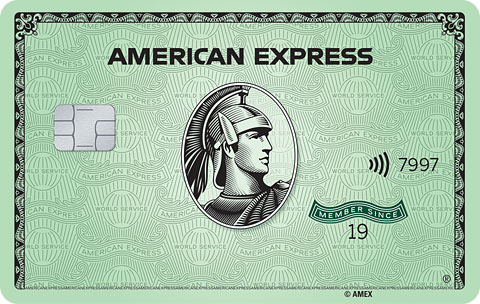
American Express® Green Card
40,000
Membership Rewards® Points
after you spend $3,000 on purchases on your new Card in your first 6 months of Card Membership. All information about the American Express® Green Card has been collected independently by 10xTravel.
Annual Fee: $150 Terms Apply.
The American Express Green® Card earns 1X Membership Rewards point on all spending and bonus points on the following categories:
- 3X on transit
- 3X on travel
- 3X at restaurants
You can offset the American Express Green Card fee with a few statement credits as long as they fit in your regular travel style. You’ll also receive some travel related benefits:
- $189 CLEAR Plus Credit: Receive up to $189 per calendar year in statement credits when you pay for your CLEAR Plus membership (subject to auto-renewal) with the American Express® Green Card
- Up to $100 LoungeBuddy credit. Good for admittance to a wide variety of lounges across the world.
- Trip delay insurance up to $300 per trip for plans delayed by more than 12 hours. You may claim only two incidents per year.
- Lost luggage insurance up to $1,250 per person for checked baggage and $500 for carry-on baggage if bags are lost while traveling on a common carrier. You must pay for your entire trip with either the American Express Green Card or Membership Rewards points. For instance, using airline miles to book your trip and using the Amex Green Card to pay your taxes and fees won’t cover your bags.
- Secondary car rental coverage. Pay for your trip with this card or Membership Reward points and waive the collision coverage at the rental desk, and you’ll be covered for any damage your personal auto policy doesn’t cover, including the deductible.
While American Express typically has higher annual fees, the card offers some solid benefits. If you already pay for Clear and find yourself occasionally without lounge access, these two credits easily offset the annual fee.
Membership Rewards are powerful points, especially for international travelers. While the trip protections offered are helpful, the Chase Sapphire Preferred® Card has them beat with a lower fee.

Final Thoughts
While earning points on routine spending is important, it’s hardly the only thing to consider when choosing a credit card. The Citi Premier® Card might barely edge out the Chase Sapphire Preferred® Card on points earning and transfer partners, but it falls behind on travel benefits and travel portal redemptions.
One usage of trip delay insurance, travel interruption insurance or auto collision damage protection can be worth years of annual fees. While there are several other cards in the same category to consider, the Chase Sapphire Preferred® Card offers plenty of transfer partners and a lucrative earning structure, especially when paired with other Chase products.
Unless you’ve opted to carry a premium travel card like the Chase Sapphire Reserve® or The Platinum Card® from American Express, as long as you’re under 5/24, there’s few reasons to not grab the Chase Sapphire Preferred.
If your travel benefits are covered by a premium card, perhaps you can skip the Chase Sapphire Preferred® Card in favor of a card that offers slightly better earning potential or transfer partners. Overall, however, the Chase Sapphire Preferred® Card wins one for the gipper and defends its title of best travel card against another rival.
New to the world of points and miles? The Chase Sapphire Preferred® Card is the best card to start with.
With a bonus of 60,000 bonus points after you spend $4,000 on purchases in the first 3 months of account opening. , 5x points on travel booked through the Chase Travel Portal and 3x points on restaurants, streaming services, and online groceries (excluding Target, Walmart, and wholesale clubs), this card truly cannot be beat for getting started!
after making $4,000 in purchases with your card within the first 3 months of account opening. Plus, for a limited time, earn a total of 10 ThankYou® Points per $1 spent on hotel, car rentals, and attractions (excluding air travel) booked on the Citi Travel℠ portal through June 30, 2024.
after you spend $4,000 on purchases in the first 3 months of account opening.
after you spend $500 on purchases in your first 3 months from account opening
(on up to $20,000 spent in the first year) - worth up to $300 cash back!
Earn $200 cash back after you spend $1,500 on purchases in the first 6 months of account opening. This bonus offer will be fulfilled as 20,000 ThankYou® Points, which can be redeemed for $200 cash back. Special Travel Offer: Earn an additional 4% cash back on hotels, car rentals, and attractions booked on Citi Travel℠ portal through 6/30/2025.
after you spend $1,500 on purchases in the first 6 months of account opening. This bonus offer will be fulfilled as 20,000 ThankYou® Points, which can be redeemed for $200 cash back.
after you spend $4,000 on purchases within 3 months from account opening.
after you spend $3,000 on purchases on your new Card in your first 6 months of Card Membership. All information about the American Express® Green Card has been collected independently by 10xTravel.
Editors Note: Opinions expressed here are author’s alone, not those of any bank, credit card issuer, hotel, airline, or other entity. This content has not been reviewed, approved or otherwise endorsed by any of the entities included within the post.




